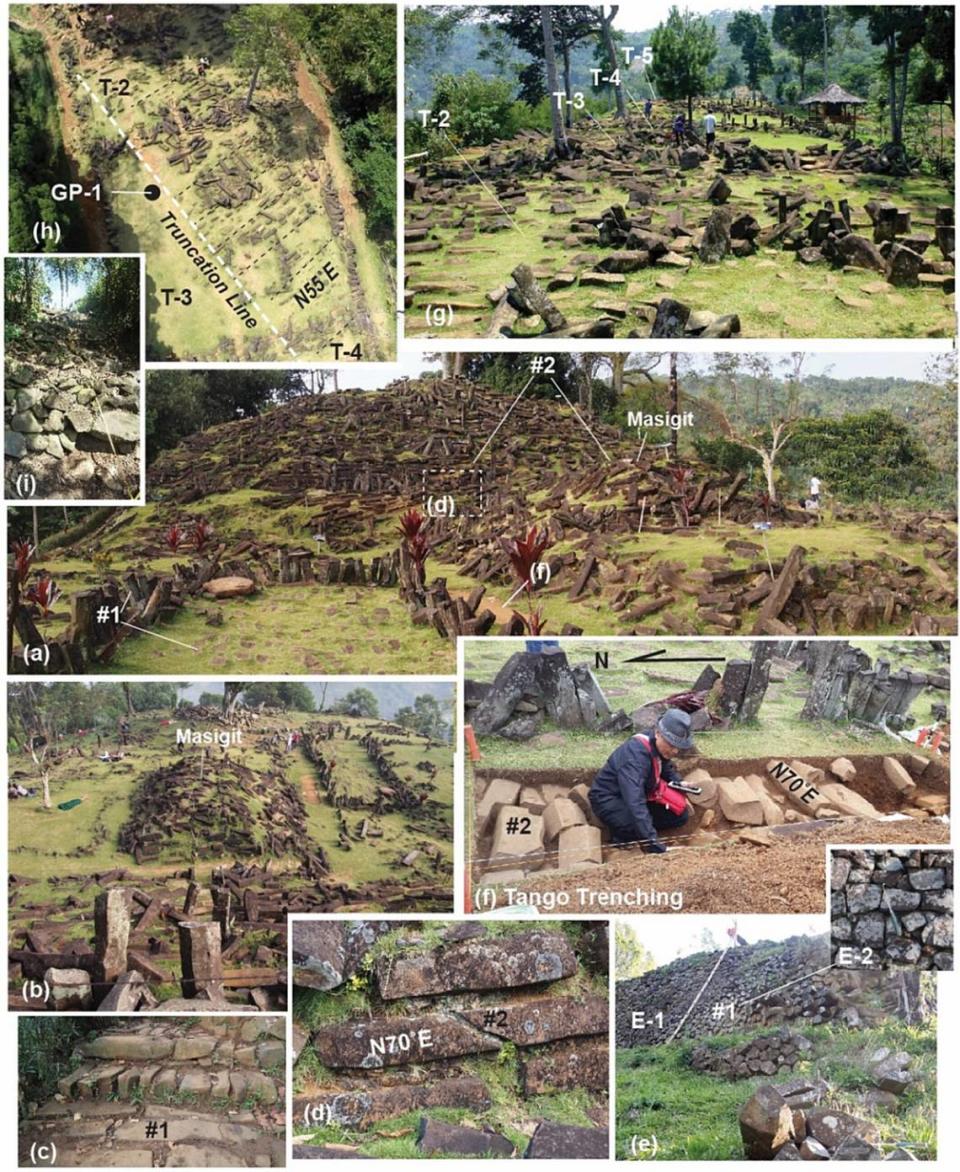This pyramid made of lava — buried in Indonesia — might be world’s oldest, study says
The word “pyramid” immediately brings to mind the imposing triangular structures of the Egyptian desert. Despite their iconic status, these structures might not be the world’s oldest pyramids.
Instead, researchers argue in a new study that this title belongs to a pyramid made of lava and buried in Indonesia.
Gunung Padang is a megalithic site on a hilltop of Java island whose name means “mountain of enlightenment,” according to a study published Oct. 20 in the journal Archaeological Prospection. With its stone terraces and upright slabs, Gunung Padang was typically assumed to be an ancient cemetery or religious spot.
An interdisciplinary team of archaeologists, geophysicists and geologists decided to study Gunung Padang. They dug trenches, drilled into the mound’s center, took soil samples and scanned it with several 2D and 3D surveying tools.
Their findings revealed evidence of a buried “pyramid-like” structure with “complex, multi-layered and extensive ancient constructions,” the study said.
Gunung Padang was built in three major phases, researchers said. The first phase began when “a natural lava hill” was “meticulously sculpted” between 25000 and 14000 B.C. The site was then abandoned for millennia. Eventually, it was “deliberately buried.”

Two later groups of builders added “layers of rock constructions” to the site. Photos show these cut rocks and carefully arranged layers with mortar in between. The pyramid was finished between 2000 and 1100 B.C., the study said.
A diagram shows these main phases and the resulting structure. It has sloping sides and a flat, rectangular top made of several terraces. The sides of the pyramid are buried and overgrown with plants.

During their study of Gunung Padang, researchers found evidence of “a large cavity,” possibly a hidden chamber, within the pyramid. Excavations also unearthed a “unique stone” artifact which researchers named the Kujang Stone. A photo shows this bow tie-shaped stone.
“Gunung Padang stands as a remarkable testament, potentially being the oldest pyramid in the world,” researchers said.

According to Guinness World Records, the title of world’s oldest pyramid is shared between the Djoser Step Pyramid of Saqqara, Egypt, built in approximately 2630 B.C. and the Caral Pyramids of Caral, Peru, built between 2700 and 2600 B.C.
Comparatively, researchers concluded that Gunung Padang was first constructed between 25000 and 14000 B.C., making it at least 16,000 years old.
When asked about this massive age gap, the study’s lead co-author Danny Hilman Natawidjaja told McClatchy News in a Nov. 8 email that it “isn’t easy to answer … we still need lots of new data.”

Natawidjaja said that Gunung Padang’s age poses “a challenge to our current understanding of human history,” but it is not the only site to do so. He pointed to Gobekli Tepe, a settlement in modern-day Turkey that “was constructed about 11,600 years ago.”
Researchers determined Gunung Padang’s age by radiocarbon dating soil samples from the man-made layers and comparing this to the visible weathering of nearby stones, the study said.
Radiocarbon dating analyzes when organic material, such as organisms and plants, within the soil died, Natawidjaja said. Based on the assumption that these organisms died when the soil was used for construction purposes, researchers determined the age of Gunung Padang.
Gunung Padang is on the southwestern part of Java island, about 80 miles southeast of Jakarta.
The research team included Danny Hilman Natawidjaja, Andang Bachtiar, Bagus Endar Nurhandoko, Ali Akbar, Pon Purajatnika, Mudrik Daryono, Dadan Wardhana, Andri Subandriyo, Andi Krisyunianto, Tagyuddin, Budianto Ontowiryo and Yusuf Maulana.
Massive meeting hall of legendary king unearthed in Germany. See the ancient ruins
Royal scribe died 2,500 years ago in Egypt. His job might have caused his early death
Huge burial chamber hid under Mexico town for centuries — until now. See its treasures

